Trichotillomania—often referred to as a hair-pulling disorder—is more than just a bad habit. For those who experience it, the repetitive urge to pull hair from the scalp, eyebrows, eyelashes, or other parts of the body can feel overwhelming and uncontrollable. This condition is considered a mental health disorder under the category of body-focused repetitive behaviors (BFRBs), and it often has deep emotional, neurological, and behavioral roots.
If you're in Edmonton or St. Albert and searching for compassionate, evidence-based therapy for trichotillomania, you're not alone. At Wholesome Psychology, we understand the complex emotions and daily challenges that accompany this condition. Our therapists are trained to help you identify underlying triggers, develop healthier coping mechanisms, and regain control over your behavior in a safe, supportive environment. For more on treatment options, see our page on Trichotillomania Counselling.
What Is Trichotillomania?
Trichotillomania is characterized by recurrent, irresistible urges to pull out hair from your body, despite trying to stop. It is often accompanied by feelings of tension before pulling and relief afterward. For many people, the behavior becomes a way of coping with stress, anxiety, boredom, or negative emotions. Although the exact cause is not fully understood, it is believed to involve a combination of genetic, neurological, behavioral, and environmental factors.
This condition most commonly begins in late childhood or adolescence, and without proper treatment, it can persist for years. Trichotillomania can cause significant emotional distress, social withdrawal, and even physical harm such as skin infections or permanent hair loss. Learn more about supporting children's mental health and teens' mental health if your family is affected.
Common Symptoms of Trichotillomania
Recognizing the symptoms of trichotillomania is the first step toward healing. While the condition may manifest differently in each individual, some of the most frequent signs include:
- Repeatedly pulling out hair from the scalp, eyebrows, eyelashes, or other areas of the body.
- Noticing bald patches or thinning areas where hair has been removed.
- Spending significant time each day pulling hair or trying to resist the urge to do so.
- Feelings of tension or anxiety before pulling, followed by relief or satisfaction afterward.
- Attempts to conceal the hair loss with makeup, hats, or hairstyles.
- Feelings of shame, guilt, or embarrassment related to the behavior.
- Skin irritation, damage, or infections resulting from hair-pulling.
Some individuals may also engage in other body-focused behaviors, such as skin-picking or nail-biting. These may co-occur with anxiety disorders, depression, or obsessive-compulsive disorder (OCD).
Why Seek Professional Therapy for Trichotillomania?
Many people with trichotillomania try to manage their condition alone, often without lasting success. Willpower alone is rarely enough, because the behavior often serves a psychological or emotional function. Professional therapy helps you uncover the roots of the behavior and provides practical, sustainable tools to overcome it.
At Wholesome Psychology, we offer trichotillomania therapy in Edmonton and St. Albert that is rooted in clinical research and delivered with empathy. We believe that healing involves not only reducing symptoms but also understanding yourself more deeply and learning new ways to navigate life’s emotional challenges. For more about our philosophy, visit our Unique Approach page.
Evidence-Based Therapies for Trichotillomania
Our therapists draw from a variety of therapeutic modalities that are proven effective for impulse control disorders like trichotillomania. Your treatment plan is personalized based on your symptoms, preferences, and goals. Commonly used approaches include:
Cognitive Behavioral Therapy (CBT)
CBT is one of the most widely studied therapies for trichotillomania. It helps you understand the connection between your thoughts, emotions, and behaviors. A specific form of CBT, called Habit Reversal Training (HRT), is particularly effective. It includes techniques like awareness training, competing response development, and relaxation strategies to interrupt the hair-pulling cycle.
Dialectical Behavior Therapy (DBT)
Originally developed for individuals with intense emotional dysregulation, DBT helps build skills in mindfulness, emotion regulation, and distress tolerance. It is particularly helpful for clients who pull hair in response to emotional distress or overwhelming feelings.
EMDR (Eye Movement Desensitization and Reprocessing)
Some individuals develop trichotillomania as a response to trauma or unresolved emotional pain. EMDR can help process these memories and reduce the compulsion to engage in harmful repetitive behaviors. Learn more about our trauma therapy options.
Mindfulness-Based Therapy
By fostering present-moment awareness, mindfulness therapy helps you recognize urges without automatically acting on them. This allows for more intentional decision-making and increased emotional regulation over time.
Emotionally Focused Therapy (EFT)
While often used in couples counselling, EFT is also beneficial for individuals who want to explore the emotional roots of their behaviors. This therapy helps build self-awareness and develop healthier emotional responses.
Our Approach at Wholesome Psychology
Healing from trichotillomania requires more than clinical knowledge—it requires compassion, patience, and trust. At Wholesome Psychology, we prioritize building a strong therapeutic relationship that makes you feel safe and understood. We take time to explore your lived experiences, emotional triggers, and personal goals. Our clinicians work with clients of all ages, including children, teens, and adults.
Each of our therapists is fully licensed and trained in therapies suited to treat body-focused repetitive behaviors. We are here to guide you through every step of the healing process, from understanding your symptoms to celebrating your progress.
Trichotillomania in Children and Teens
Trichotillomania often first appears in childhood or adolescence, a time of immense physical and emotional change. For young clients, therapy focuses on education, skill-building, and family support. We work closely with parents to create a supportive environment at home, while empowering the child or teen to take control of their behavior in age-appropriate ways. For more resources, see our pages on child & youth therapy and self-esteem issues in youth.
If you're a parent in Edmonton or St. Albert concerned about your child’s hair-pulling behavior, we welcome you to contact us. Earl
